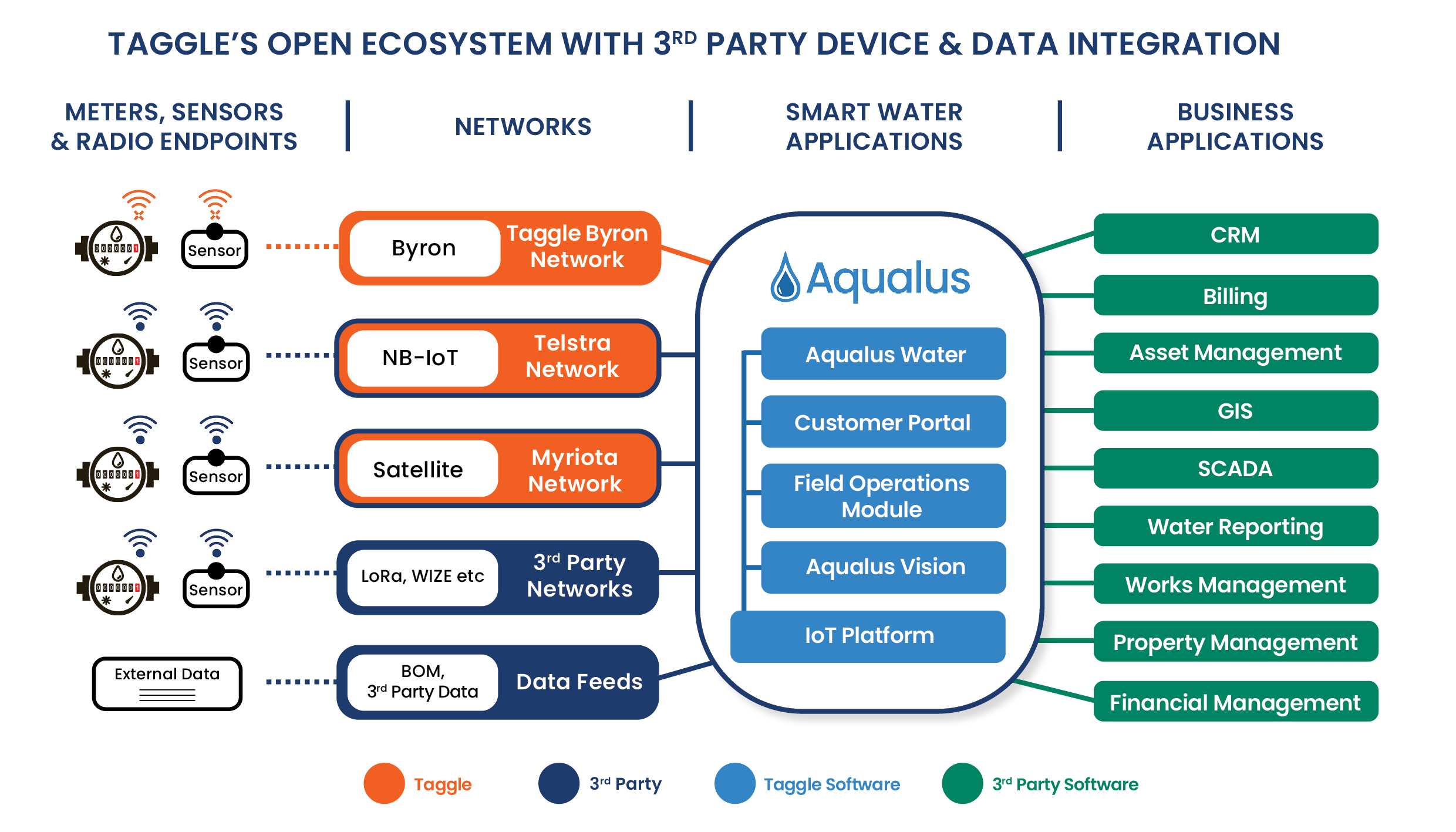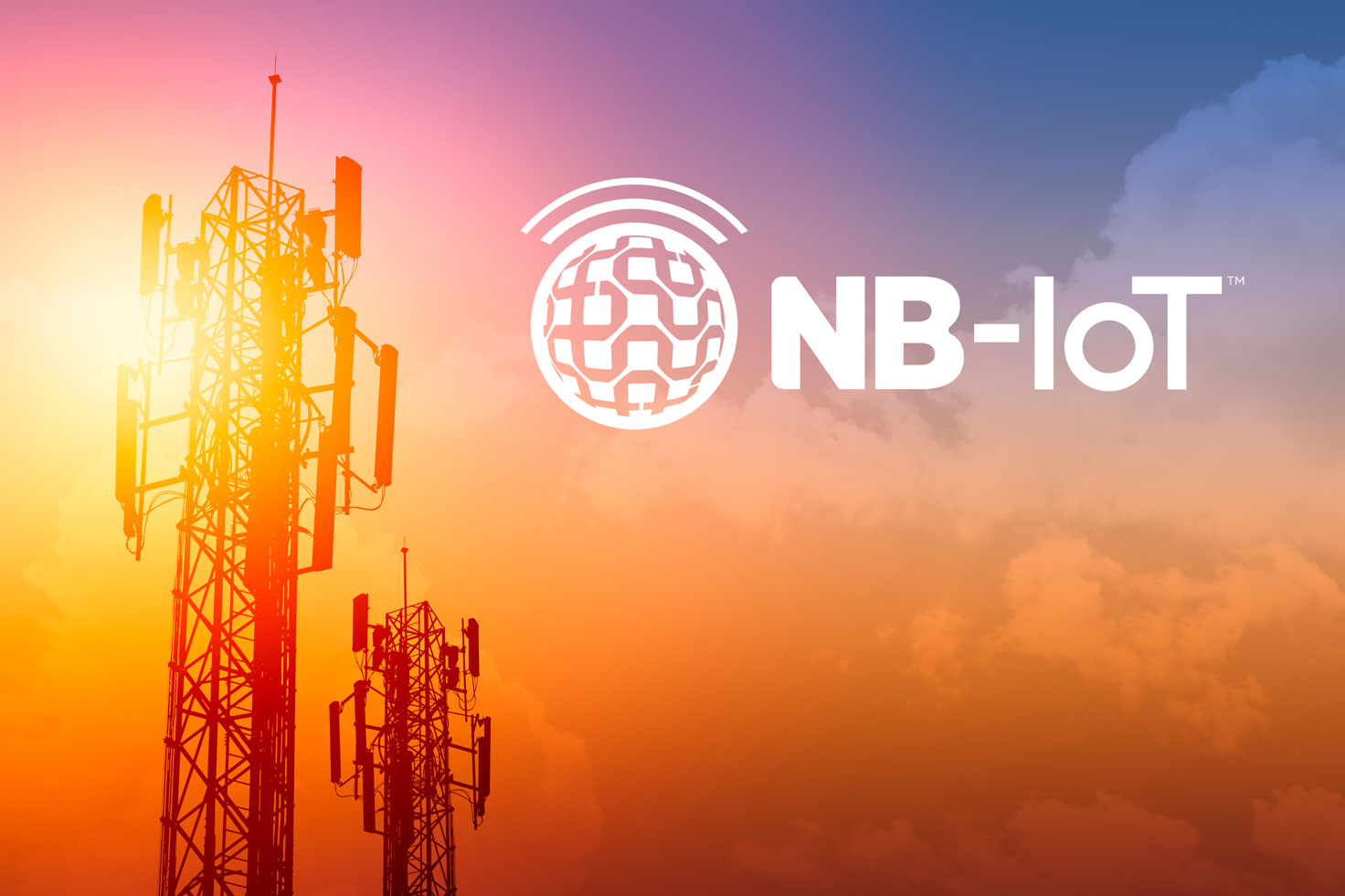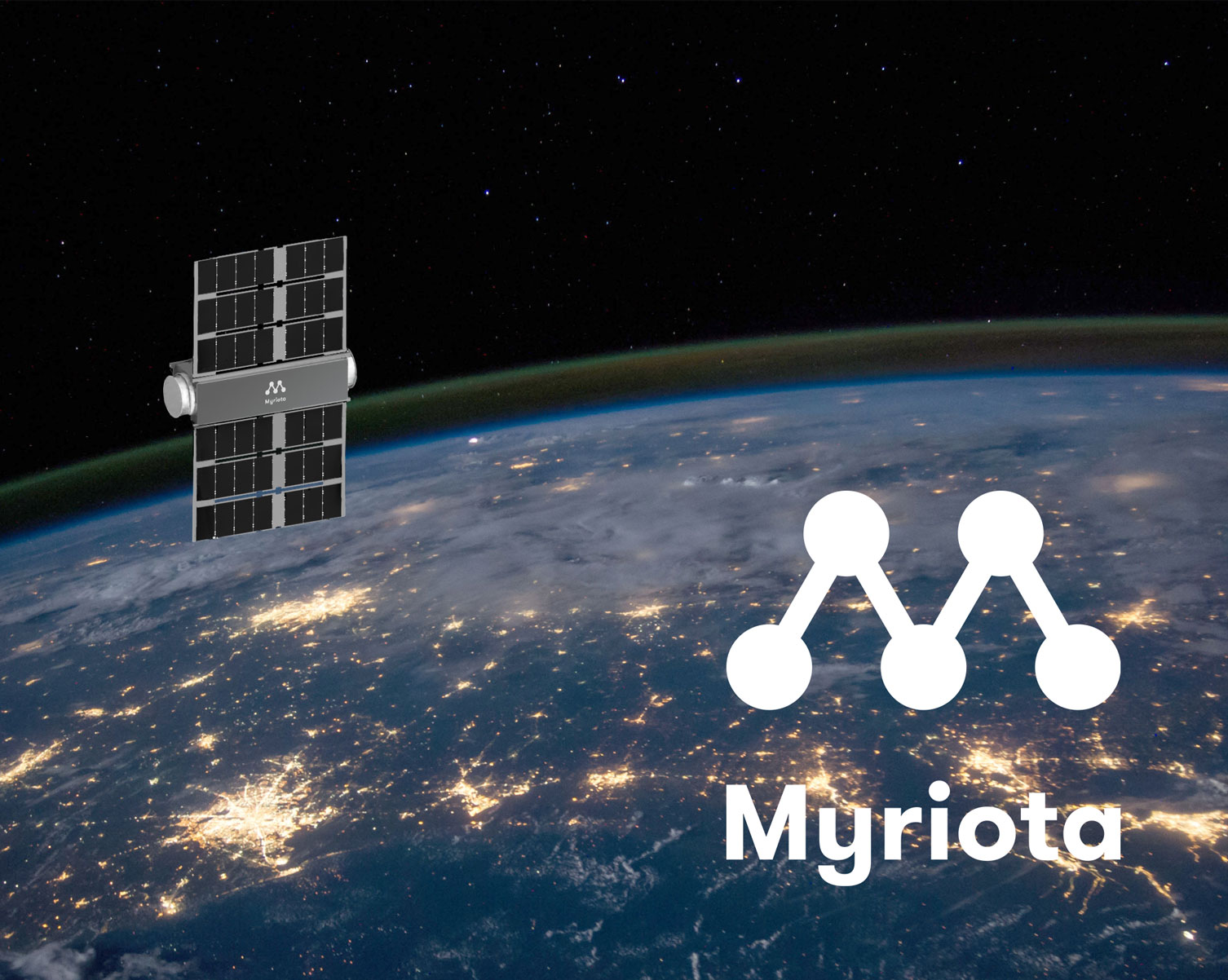TAGGLE ECOSYSTEM
SENSOR TO SOFTWARE
Introduction to the Taggle ECOSYSTEM
Taggle offers an end-to-end solution for digital water metering and has successfully built an ecosystem of technologies, partners and solutions to deliver water saving outcomes to councils and water utilities.
Collecting and delivering data requires hardware, networks, software, integration and support services, to which Taggle continues to expand its capabilities, adopt new technologies, invest in R&D and build partnerships.
The diagram below highlights all the different data sources, communication protocols and business applications that data from digital water meters and remote sensors can flow through.
This open, interoperable, and agnostic approach is key for success. The Taggle Ecosystem contains solutions at each step of the value chain that can be provided by Taggle or a third party depending on each customers preferences and requirements.
Its all about delivering the required data, at the required time, to the required applications.
DATA COLLECTION AND ENDPOINTS
In Taggle’s terminology, endpoints comprise of a meter or sensor fitted with a transmitter to send data via a network to an online platform.
These transmitters are battery powered and can be integrated into the meter or sensor or added on via a “Tag” or data logger.
HONEYWELL V200HT
TAGGLE BYRON ENABLED SMART WATER METER
Available in DN20, DN25, DN32 & DN40
Taggle has partnered with Honeywell/Elster, Australia’s largest supplier of water meters, to develop a family of integrated meters. These meters use the latest in volumetric measurement technology for a reliable and robust meter with integrated Taggle radio communications.
The expanded range of sizes means that Water Service Providers have access to a wider range of integrated smart water meters. They are ideal for residential and commercial properties, allowing for easy installation and reducing the risk of add on devices being tampered with or damaged.
The Taggle/Honeywell partnership has resulted in Australia’s most widely used and trusted integrated smart water meter, which boasts a 15+ year battery life.
Learn more about the V200HT on our PRODUCT page.

TAGGLE ENDPOINTS OR “TAGS”
Taggle has a family of add on devices to suit a range of radio environments and to fit most water meter types in Australia.
The latest range of Taggle’s endpoints boast a 15+ year battery life based on hourly transmissions.
Within the range are different communication options including the Taggle Byron Radio Network, NB-IoT and Myriota Satellite.
Learn more about the Taggle devices on our PRODUCT page.
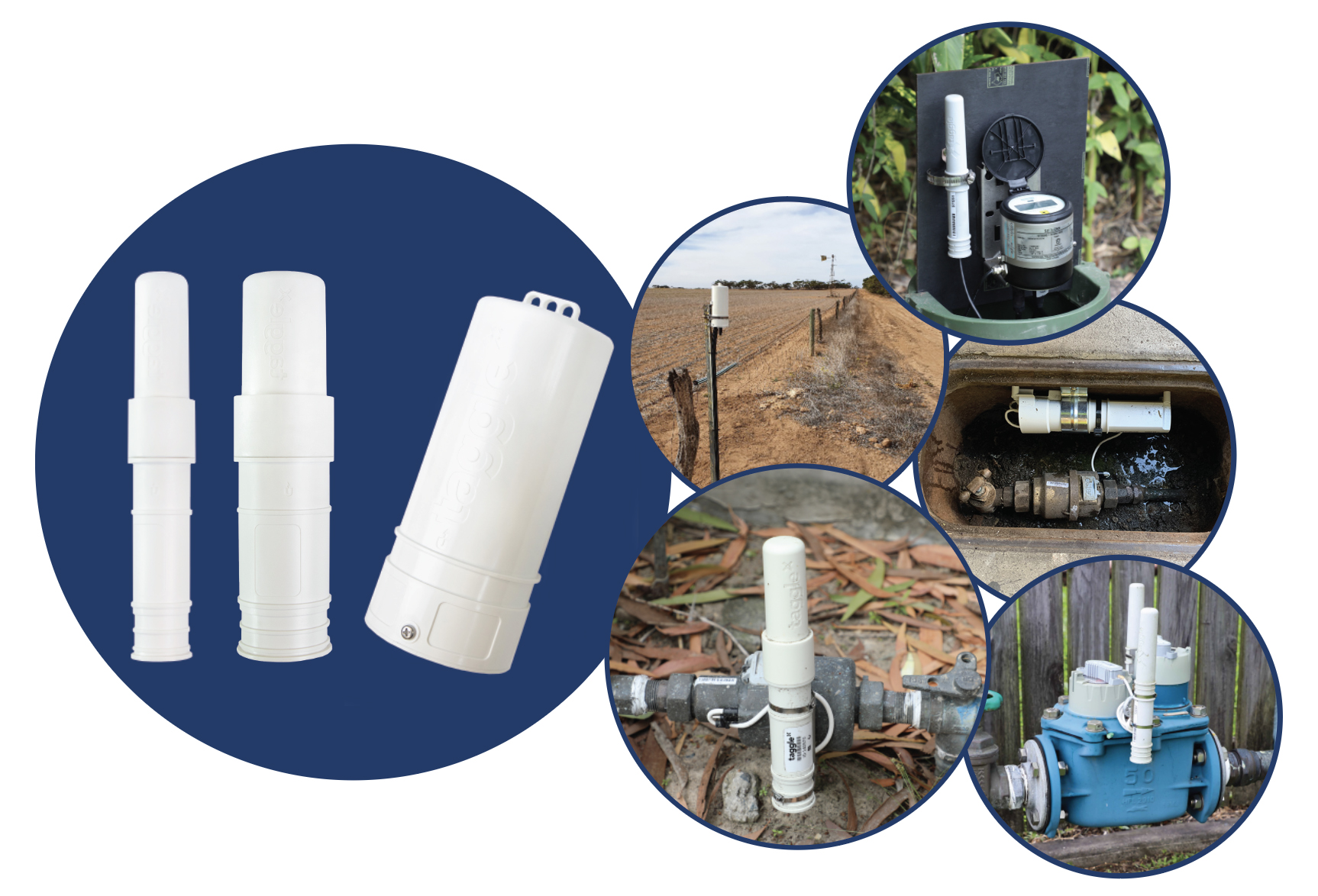
3RD PARTY DEVICES
Choosing the Taggle solution does not lock you in to any one hardware vendor. We appreciate that other hardware and network solutions may be selected and our Aqualus Water platform can ingest and deliver data from these other sources.
Whilst Taggle has solutions at every step of the value chain, we also have clients today on our Aqualus platform who use 3rd party devices/endpoints or networks to collect the data.
It’s all about delivering the right data, at the right time, to the right applications.
So if you would like to include NB-IoT, Sigfox, LoRa, WIZE or any other provider’s endpoints in your project, we will happily support this. We will provide the data in a seamless manner through our open and interoperable platform.
RADIO NETWORKS
There are many radio network options when it comes to IoT and smart water metering, each with a different set of strengths and weaknesses.
While Taggle has its own proprietary Byron Radio Network, we also have devices connected by NB-IoT and Satellite.
The Taggle Digital Water IoT Platform is open and agnostic so can ingest data from different radio networks. This allows us to provide the most efficient network solution in different environments and for different use cases.
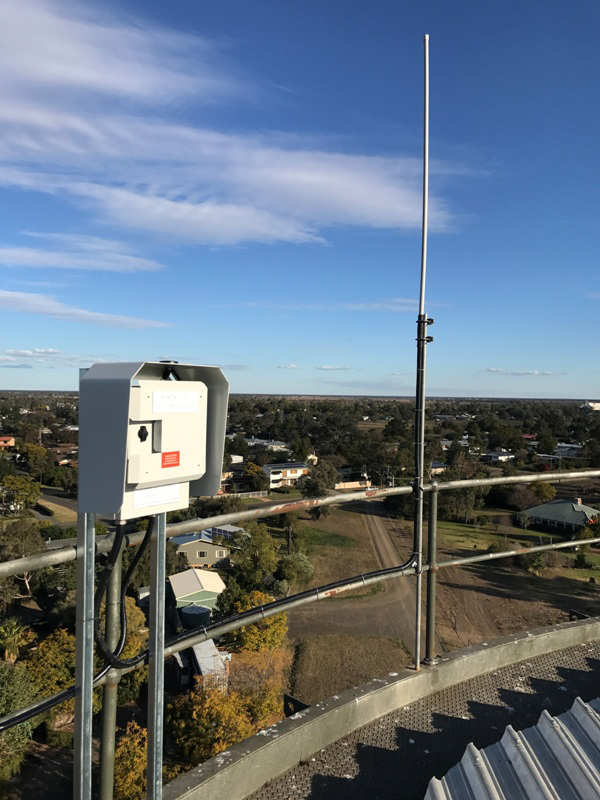
TAGGLE BYRON LPWAN
What kicked off Taggle’s Smart Water Metering solution is its Low Power Wide Area Network (LPWAN) which is perfectly suited for monitoring water assets.
From the outset, Taggle’s founders, who were instrumental in the development of high-speed Wi-Fi chips that are now used in mobile phones and tablets, chose to develop an asynchronous (one-way) communications system that focused solely on collecting small amounts of data from large numbers of sensors distributed across wide areas.
The result is a dedicated one-way sensor network that provides best-in-class power, range and network capacity, and is ideally suited to the smart water metering market.
The Taggle Byron network is comprised of receivers that include extremely sensitive radio receivers fitted with a high gain antenna.
Each receiver has an effective range of 2km to 5km in urban and 5km to 50km in rural areas. Ranges achieved will depend on local installation conditions and the power of the tag in use.
With a capacity of up to 30,000 sensor readings per hour, Taggle’s network scales easily for both city and region-wide use.
NB-IoT with Telstra
Taggle has adopted Telstra NB-IoT as a secondary radio standard, offering flexibility and choice to Taggle customers for their Smart Water Meter deployments.
The Telstra NB-IoT radio supports low cost, utility scale deployments using Telstra’s existing NB-IoT cellular networks and is particularly suited to dense urban environments.
Taggle provides the end-to-end solution including “network as a service” to enable simple procurement and streamlined operations. Taggle NB-IoT devices contain a pre-integrated SIM and Taggle managed NB-IoT communications from Telstra.
MYRIOTA SATELLITE COMMUNICATIONS
As good as Taggle’s LPWAN is for smart water metering and sensor data acquisition, there are times when endpoints might be in very remote locations where it would be uneconomical to deploy a Taggle receiver.
For such situations, Taggle has partnered with Myriota, a South Australian satellite communications manufacturer to include satellite communication capabilities within the Taggle Cockatoo.
These battery-powered units leverage Myriota’s constellation of nanosatellites, allowing them to be deployed to collect meter or sensor data from anywhere in Australia.
The Cockatoo with Myriota connectivity is designed to support rural water utility providers and councils with accurate reporting data that removes the need for manual checks of water management devices.
Read more HERE
3RD PARTY NETWORKS
As previously stated, should you wish to utilise other networks and devices as part of your smart water metering project, Taggle will fully support this as our IoT platform is open, interoperable and agnostic.
Whether you choose to have a mix of providers or go 100% with another network and device provider, Taggle can still deliver the data via our platform as part of a successful solution.
DATA DELIVERY – AQUALUS WATER IOT PLATFORM
Aqualus Water is Taggle’s Meter Data Management platform. It was designed with water utilities for water utilities, specifically to handle the unique data and processes that emerge from the widespread adoption of smart water metering.
It provides detailed information relating to the day-to-day operation
and performance of water infrastructure, from the largest networks to individual services.
Tools include a wide range of reports, alerts, and the ability to drill down into each property or look at the data across the entire network.

Aqualus Water provides utility staff with the tools they need to manage all aspects of a smart meter fleet;
- Reports
- Property Dashboards
- Leak Detection
- Installation & Maintenance
- Network Management
- Fault Detection
- DMA Mass Balance
- Billing
- Customer Relationships
LEAK DETECTION
A built-in algorithm enables the detection of water leaks with a high degree of accuracy.
With reports, alerts and a range of graphs, water loss can be quickly and easily identified, quantified and action taken to fix them.
Leak functionality integrates with the Customer Relationship and Consumer Engagement modules to facilitate an automated alert process through email, sms or letter.
Leaks add up to more than lost water and Aqualus Water can help save on some of these costs.

BILLING INTEGRATION
This functionality enables the utility to extract meter reads at defined instances (date/time) for upload into the billing system. Where a read is not available at the exact required instance, the user can lay down parameters within which a meter read can be estimated by interpolating or extrapolating the available data.
Aqualus Water has three built-in data schema (Aqualus Water Internal, UDS & MV-RS) for export of meter reads to third party billing systems. Where a need exists, additional customer-specific schema can be developed where the required information is received from the third party system.
METER READING AND AUDITING
The Meter Reading and Auditing module contains the functionality to undertake check-reads and audit system performance automatically. Using existing meter-reading routes, this module enables the creation of meter-reading batches using standard sampling techniques. Users can determine the extent of sampling that is required.
Once the batches are created, field crews can undertake the reading using the Aqualus Water tablet module, which eliminates the need to maintain specialised hand-held reading devices. Validations and warnings are built in to minimise data entry errors. The Aqualus Water tablet also supports taking photos from the tablet with GPS geotagging and uploading these directly into Aqualus Water to support the meter reading, if desired.
Network Management & District Metered Areas
The District Metered Area (DMA) module within Aqualus Water is able to fully manage the most complex of water networks in order to partition network segments for reporting and analytics.
Reports within Aqualus Water can utilise water meter data to highlight areas of high or low pressure, as well as revealing trends in customer behaviour based on season, property type and customer profile.


By comparing supply and consumption data within the DMA, a rolling mass balance calculation can be performed in order to identify not only non-revenue water through network leaks, but also specific events such as short- term unmetered consumption.
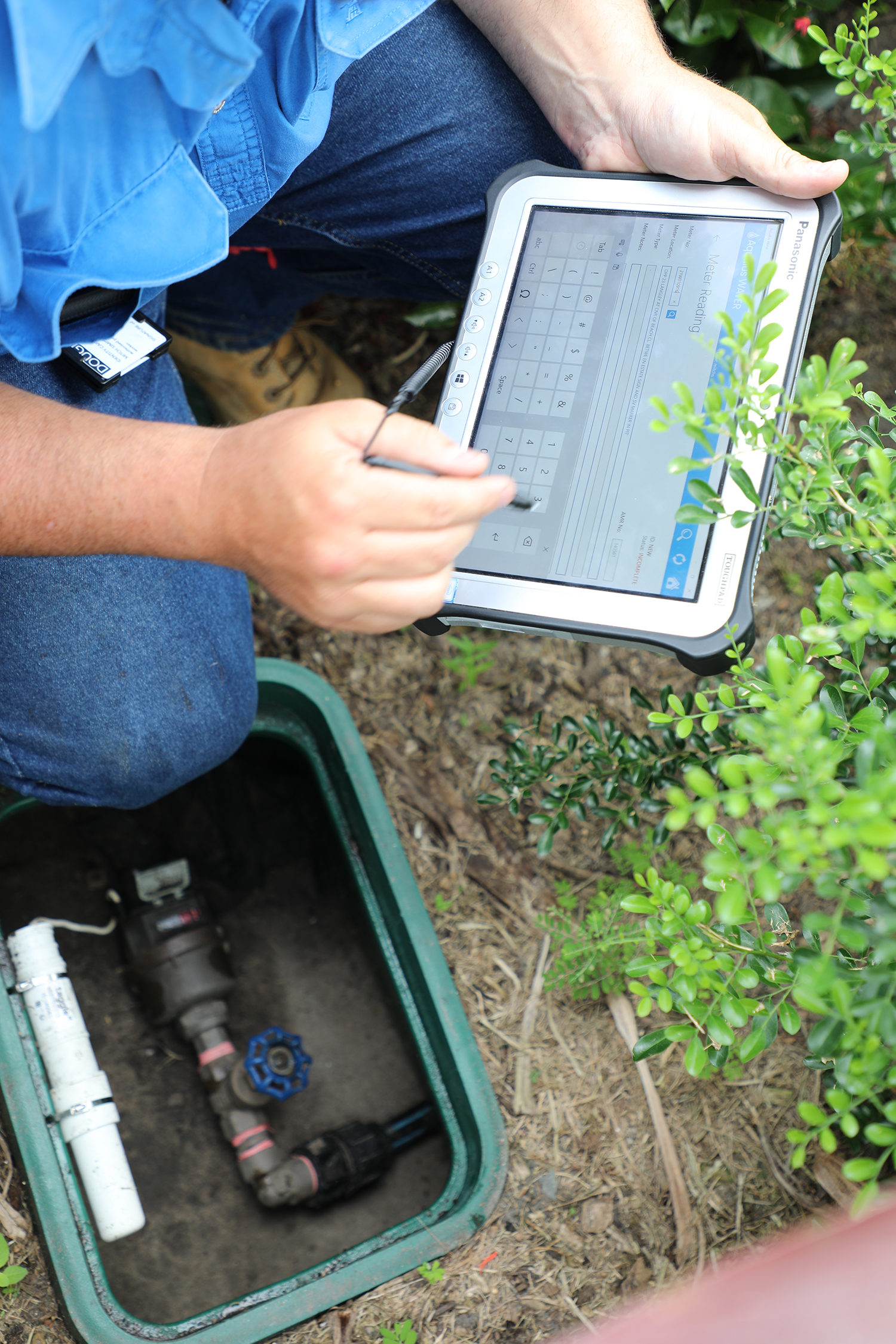
FIELD OPERATIONS APPLICATION
Key to the success of Taggle’s Smart Water Metering system to date have been the tools and processes associated with installation and commissioning. These tools have been developed through delivering similar projects for more than 45 Australian Water Service Providers over the past ten years.
To assist with installation and commissioning processes, Taggle has developed a number of manuals/guides to show the company’s installation partners and customers’ staff how receivers and transmitters should be installed.
These, combined with a field tablet computer used during installation and commissioning, improve the speed and efficiency with which systems are deployed, reducing installation errors to a minimum.
As a companion to its Aqualus Water software, Taggle offers its Field Operations Application, software designed to operate on ruggedised tablet computers such as Panasonic’s ToughPad. Fitted with GPS, a camera and optional 4G modem, these devices are used by installers and maintainers to record every aspect of endpoint installation and other operations.
Field tablets are used to record details of meter and transmitter installations, meter or transmitter swaps and, when required, manual meter reading. With the optional 4G modem installed, data can be uploaded and verified in near real-time, doing away with the need for forms and other pieces of paper that occasionally end up on the floor of a service vehicle.
The Field Operations Application provides field staff with tools to manage the following activities:
- Job management
- WH&S
- Installation Process
- Repair and Replacements
- Record Keeping
- Photos
- GPS Locations
- Meter reading
- Quality Assurance
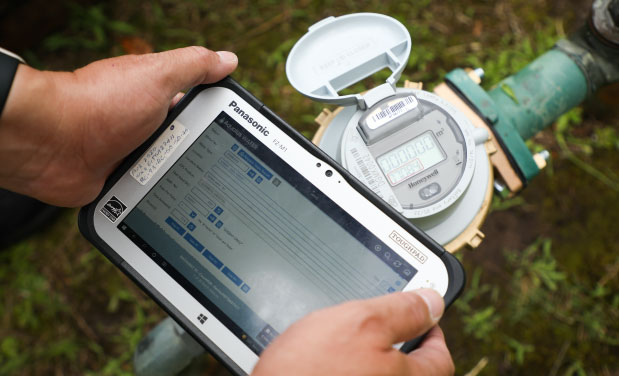

Customer Portal
The Customer Portal provides a utility with a turn-key way of providing its customers with access to their own water consumption data, allowing them to configure their own alerts and communication preferences.
The Customer Portal enables a utility to take CRM functionality a step further by providing consumers with an opportunity to directly access their own water consumption data on a self-serve basis.
It permits property owners, tenants and real-estate agents to gain access to relevant water consumption data in a secure, moderated environment.
Leak Alerts and High Consumption
The Customer Portal makes it easy to identify potential leaks and high water consumption activities. By setting up SMS and email alerts, utility customers will be notified of any high use or potential leaks, enabling them to reduce costs through better water management. Customers can also export their property’s data into a spreadsheet and send weekly or monthly reports via email, which will highlight any abnormal use or potential leaks.
The Customer Portal assists in improved customer service as detailed information can be provided when queries arise. This quickly resolves issues before they escalate as data can identify exactly when the water is being used.
Notifying customers of potential leaks and high water consumption can save them money and reduce the demand on the water utility.
By providing information about high consumption and possible leaks, the utility is able to keep customers informed about their consumption patterns, avoiding bill-shock and empowering consumers to change their own behaviours accordingly.


